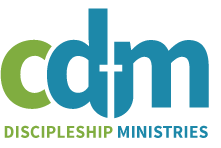Editor’s note: This month’s Equip Tip will break from the series on Learning Styles so it fits better with the book theme.
Nighttime will many times find my wife and me lying in bed reading. Cindy will alternate between novels, WIC books, and studies, plus other interesting works. I, on the other hand, enjoy curling up with a good systematic theology or a dictionary of some kind (no snide comment please!). There was one night recently when there was a real struggle. It was a thousand page hardback book that sat heavy on my chest. Harder still was the difficulty of holding it steady while trying to underline some sentences and highlighting others. I lay there wishing there was a better way.
Click here to read entire publication in PDF (Acrobat Reader required)
Thoughts kept running through my mind of how nice it would be to have the ability to make a thousand page book much thinner and lighter and more user friendly. The next day I found the same problem simply resting the book on my lap while sitting in my favorite chair. What is a reading man to do? What might the future bring to help with this problem?
In the distant future I see a “book” that will allow me to underline with straight lines that later doesn’t hinder my reading because the line blotted out the words. There will also be the ability to highlight entire paragraphs and be able to use as many different colors as desired, using each color to represent whatever I want it to emphasize. This new book will allow me to add my own notes, not only in the margins, but between lines that I can separate. It will also allow me to erase all my mistakes without putting holes in the page. Perhaps the best thing about this book of the future is that it will come with its own lighting, so I am not dependent on the kind of lighting in the room, nor the time of day. It will not even be affected by the sun if I choose to read while at the beach.
Oh, how i long for that future!
Needless to say, the future is here, but most of us are just too stubborn to take the future out for a test drive.
One of these future “books” is put out by Amazon – it is called the Kindle. It is small and very light. It holds hundreds of books without extra weight. It comes with what is called electronic paper and ink, making it readable in any light without the light glaring back at you (like a computer does) making you too tired to read. You can change the size of the font, and mark it up in more ways than I have yet to discover. However, I don’t recommend the Kindle only for the reason once you buy it you are a slave to buying everything from Amazon, and the price for me is still not justifiable.
There are other devises already out there, but again the price is not appealing – yet! I have pleaded with a number of Christian publishers to ban together to approach a company like Dell to get them to come up with a devise that will do all I want it to – and more. If they have done this, they have kept it a secret from me.
Having said all that, I still await the day when I can curl up with a thousand page book that will not crush my chest while lying in bed. I am almost 60 and willing to change to a new devise. Let’s face it, all of us will have to give up some of our future books. Why not grasp the future and learn to enjoy it? Until then I will enjoy my thousand page book at night – but it will be on my Kindle!
